33 posts
• Page 1 of 2 • 1, 2
A modelling question
-

SexyPimpAss - Posts: 3416
- Joined: Wed Nov 15, 2006 9:24 am
In terms of intersection, what do you mean? Do the planes fully intersect (like in an X) or do they meet (like a V) but aren't fused? If they're close enough to fuse, its better to do that. It gives you more control over the edges, which is always nice, and should react better to light in game (I think - again, not looking at any test cases right now).
In the end, you should be focusing on making your model look good and be neat (since it will make things easier down the line). We're far enough along that poly limits don't really matter, as long as you don't do anything completely ridiculous (modeling out every single nail or something
 )
)-
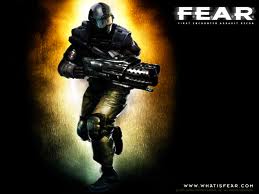
D IV - Posts: 3406
- Joined: Fri Nov 24, 2006 1:32 am
550 faces isn't a lot at all. I'm not looking at any models right now, but I'm thinking that 5k triangles shouldn't be over the limit. Do keep in mind though that a "face" is any polygon with at least 3 edges (usually things are in 4-sided quads), but the game displays things in triangles, which will usually make your face count go up. I don't know about Blender, but in Max you can change the displayed count to triangles without triangulating the model. In terms of vertexes, make sure all the ones you can fuse are fused and that there aren't any awkwardly floating out in space, and you should be OK. As far as I'm aware (and I could be wrong here), vertexes and edges don't have as much impact as polygons.
In terms of intersection, what do you mean? Do the planes fully intersect (like in an X) or do they meet (like a V) but aren't fused? If they're close enough to fuse, its better to do that. It gives you more control over the edges, which is always nice, and should react better to light in game (I think - again, not looking at any test cases right now).
In the end, you should be focusing on making your model look good and be neat (since it will make things easier down the line). We're far enough along that poly limits don't really matter, as long as you don't do anything completely ridiculous (modeling out every single nail or something )
)
In terms of intersection, what do you mean? Do the planes fully intersect (like in an X) or do they meet (like a V) but aren't fused? If they're close enough to fuse, its better to do that. It gives you more control over the edges, which is always nice, and should react better to light in game (I think - again, not looking at any test cases right now).
In the end, you should be focusing on making your model look good and be neat (since it will make things easier down the line). We're far enough along that poly limits don't really matter, as long as you don't do anything completely ridiculous (modeling out every single nail or something
 )
)-
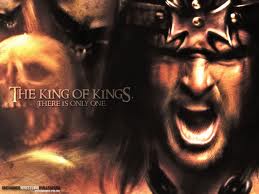
Yung Prince - Posts: 3373
- Joined: Thu Oct 11, 2007 10:45 pm
That's a nice low tri count for a 2011 game.
Don't overlook the power of baking maps from fully detailed (ie, v. high poly) geometry, either - bump is essential, and ambient occlusion really helps when creating textures. High-poly modeling can be easier than low-poly, too, because you can build any detail you want into the mesh without limitations on size (though anything over a few million might get slow ).
).
I prefer to bake inside of Max (no idea what Blender can or can't do in that regard), but look into a program called xNormal if you're not already familiar with it.
Don't overlook the power of baking maps from fully detailed (ie, v. high poly) geometry, either - bump is essential, and ambient occlusion really helps when creating textures. High-poly modeling can be easier than low-poly, too, because you can build any detail you want into the mesh without limitations on size (though anything over a few million might get slow
 ).
).I prefer to bake inside of Max (no idea what Blender can or can't do in that regard), but look into a program called xNormal if you're not already familiar with it.
-

matt - Posts: 3267
- Joined: Wed May 30, 2007 10:17 am
That's a nice low tri count for a 2011 game.
Don't overlook the power of baking maps from fully detailed (ie, v. high poly) geometry, either - bump is essential, and ambient occlusion really helps when creating textures. High-poly modeling can be easier than low-poly, too, because you can build any detail you want into the mesh without limitations on size (though anything over a few million might get slow ).
).
I prefer to bake inside of Max (no idea what Blender can or can't do in that regard), but look into a program called xNormal if you're not already familiar with it.
Don't overlook the power of baking maps from fully detailed (ie, v. high poly) geometry, either - bump is essential, and ambient occlusion really helps when creating textures. High-poly modeling can be easier than low-poly, too, because you can build any detail you want into the mesh without limitations on size (though anything over a few million might get slow
 ).
).I prefer to bake inside of Max (no idea what Blender can or can't do in that regard), but look into a program called xNormal if you're not already familiar with it.
-

Stryke Force - Posts: 3393
- Joined: Fri Oct 05, 2007 6:20 am
What is baking maps? Sorry, I'm really quite new to modelling, I can make some models basically with Blender but I know zero techniques. By the way, something I used to know how to do, that I've now forgotten, is to sort of soften out the edges of something, like it will turn a 90 degree angle into 2 45 degree angles with a small extra face between. I did this once before, but I've forgotten how to do it. Anyone know what function this is in Blender?
Baking maps is a technique to generate normal maps from a high poly model. You make a high poly model with a crazy amount of detail (like wrinkles on a face etc) and then you generate a normal map from it so the wrinkles can be seen on the low poly model without destroying the performance of the game. But this is only needed really for organic models like creatures, bodies, maybe clothes/armor. For architecture it's usually a waste of time and makes things more complicated than they need to be. Maybe you're even using Skyrim textures on your model, in that case you won't need it anyway.
550 faces is a really low resolution model for a house, you should try to add some more detail to it, smoothen edges etc. I obviously haven't seen the model yet, but with that amount of faces it can only look very 'basic'. Even Morrowind models had more faces than that already.
I don't use Blender, but it should be called something like 'chamfer edges'.
EDIT: Found http://www.blender3darchitect.com/2008/10/how-to-use-the-bevel-modifier-to-chamfer-edges-of-a-model/, seems like the bevel modifier is what you're looking for.
-

Charlie Ramsden - Posts: 3434
- Joined: Fri Jun 15, 2007 7:53 pm
That beveling thing doesn't seem to work for me. I followed the few instructions on that tutorial, but nothing, it does absolutely nothing at all on whatever edges I try it on... It gives me the dotted line to bevel, but then the edges do not seperate and it just stays as a sharp corner.
-

Yvonne Gruening - Posts: 3503
- Joined: Mon Apr 23, 2007 7:31 pm
Sorry, I didn't intend to complicate things by mentioning the maps, just thought it might be something worth looking into if poly counts are a limiting factor when you're modeling. Phitt's no doubt correct, in that the process is probably unnecessary for any fairly basic model (or if you're using existing textures).
Can't help further with Blender; just the interface makes my head hurt.
Can't help further with Blender; just the interface makes my head hurt.

-
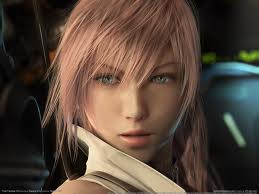
Devin Sluis - Posts: 3389
- Joined: Wed Oct 24, 2007 4:22 am
Bevel is what you want, but not modifier. Select an edge and hit W -> Bevel, then either drag mouse or type a number (0.05 - 0.1 for orientation).
Edit: oh, and for your other question, it's fine to have like that. It is even necessary. For example chimney etc will just be there going through the roof. And different material will be another object, at least it always is to me. Although you can separate them later from one using P in edit mode.
Edit: oh, and for your other question, it's fine to have like that. It is even necessary. For example chimney etc will just be there going through the roof. And different material will be another object, at least it always is to me. Although you can separate them later from one using P in edit mode.
-

scorpion972 - Posts: 3515
- Joined: Fri Mar 16, 2007 11:20 am
Roughly, how many vertices, faces and edges would a building have in Skyrim? I'm making a model to replace the 2-story village house ( as in, it's very similar in shape, it's for a mod I plan on eventually making), and while not completely done, it's currently at about 650 vertices, 1200 edges and 550 faces (according to Blender, this sounds higher than it looks to me). Is this too high to run well? Hope this is the right place to put it. EDIT: Another modelling question, when making a model, does it matter if some parts of the model intersect others but don't actually connect by vertices, so they are not technically connected but appear to be from an outside perspective? I'm hoping it doesn't, because doing this makes me need to put in a lot fewer vertices and edges.
Hey There :] Its tri's you want to count, and no intersecting geometry does not matter as long as your sure its the only way you can build something. Texture space takes up more memory than geometry so make sure any intersection is actually needed and that wasted texture space is minimized as much as possible. Make sure you delete any backfaces when you model also, thats a common beginners error.

Personally to get an idea of tri counts in some instances, I use something called 3D RipperDX . Its a great bit of software that allows you to capture all geometry, textures and shaders, rendered during a single frame. You can then import the captured geometry into your 3D creation software of choice (i use max and maya) to see what exactly has been drawn by each individual draw call. Perfect for studying tri counts, construction and such. For example heres a scene i ripped from http://3.bp.blogspot.com/__3ojWrrJcjA/S8tDDPc5kWI/AAAAAAAAAEk/hOGIor6BHDI/s1600/batman+still+enviroment.jpg. Or check out this second image, a close up of http://3.bp.blogspot.com/-zfUMDU9tdyw/TrvM681GSUI/AAAAAAAAA0I/XudfRVM6fag/s1600/Batman%2BFaceMesh%2BTriCount.jpg. For Skyrim im using the fallout mod manager, exporting the nif and checking tri counts in Max/Maya.

If you get lost or need any advice send me a pm or some screenshots of what your working on, I would be more than happy to help you out.
-
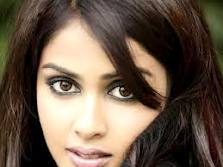
kirsty williams - Posts: 3509
- Joined: Sun Oct 08, 2006 5:56 am
Hope you dont mind me asking my question in here, just dont wanna make a thread for it.
In blender i quite often end up with faces facing the wrong way. I know you can flip the faces round, which i usually do once i notice them.
It takes a while sometimes though.
Just wondering if there is a way to select all faces and have it flip them all to the same direction, or flip only the ones facing the wrong way?
All that happens at the moment is it flips them all but leaves me with the wrong faces facing the right way and the right faces facing the wrong way. Cant think how else to explain
Or is it just one of them things you need to keep checking constantly as you go so that it never builds up ?
In blender i quite often end up with faces facing the wrong way. I know you can flip the faces round, which i usually do once i notice them.
It takes a while sometimes though.
Just wondering if there is a way to select all faces and have it flip them all to the same direction, or flip only the ones facing the wrong way?
All that happens at the moment is it flips them all but leaves me with the wrong faces facing the right way and the right faces facing the wrong way. Cant think how else to explain

Or is it just one of them things you need to keep checking constantly as you go so that it never builds up ?
-

Lizs - Posts: 3497
- Joined: Mon Jul 17, 2006 11:45 pm
Ctrl + N - face outside
Ctrl + Shift + N - face inside
Ctrl + Shift + N - face inside
-

Taylor Bakos - Posts: 3408
- Joined: Mon Jan 15, 2007 12:05 am
I think you can do this with Nifskope, by selecting mesh>flip normals and mesh>face normals. I'm not sure if that's exactly what you want, though.
-
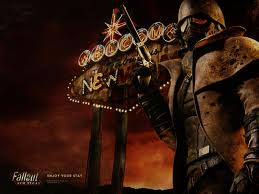
Bethany Short - Posts: 3450
- Joined: Fri Jul 14, 2006 11:47 am
I think you can do this with Nifskope, by selecting mesh>flip normals and mesh>face normals. I'm not sure if that's exactly what you want, though.
Thanks, ill give it a look.
Nothing worse than when you crash on doing something then you look at it when your finished and realise theres a whole load of backwards faces

-
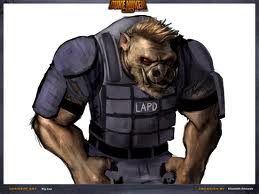
flora - Posts: 3479
- Joined: Fri Jun 23, 2006 1:48 am
@TriggerHappy - my previous post was directed to you.. ^^^
-

Matthew Aaron Evans - Posts: 3361
- Joined: Wed Jul 25, 2007 2:59 am
@TriggerHappy - my previous post was directed to you.. ^^^
Ah, i never seen.
But yea, i know the commands. But my problem is i either need to do it by selecting every backwards face individually, or select them all and press the commands.
But then it just ends up with everything back to front apart from the ones that were wrong to begin with

I'll try what Lady N said when i get a chance, and see if thats any diffrent/better.
Better stop derailing this thread now

-

Daramis McGee - Posts: 3378
- Joined: Mon Sep 03, 2007 10:47 am
For some reason, I do tend to get ignored. 
Well, I see that you don't know the commands because you're mentioning FLIP. While I recommended FACE NORMALS INSIDE or OUTSIDE.
The difference is that FLIP will flip faces to their opposite side: for example if you have 10 faces facing right and one facing wrong, if you select all and Flip you'll have one face right and 10 wrong. While commands that I mentioned previously will do exactly what you want to (you described it).

Well, I see that you don't know the commands because you're mentioning FLIP. While I recommended FACE NORMALS INSIDE or OUTSIDE.
The difference is that FLIP will flip faces to their opposite side: for example if you have 10 faces facing right and one facing wrong, if you select all and Flip you'll have one face right and 10 wrong. While commands that I mentioned previously will do exactly what you want to (you described it).
-
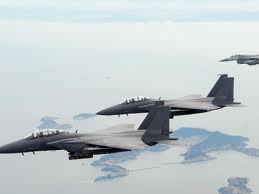
Prisca Lacour - Posts: 3375
- Joined: Thu Mar 15, 2007 9:25 am
Okay, well here's what I've got so far. http://i767.photobucket.com/albums/xx316/randomguyface/buildings1.png Thanks for all the tips on beveling and the like, it started working when I tried again this morning (I don't know what was wrong with it before) and after screwing a few things up and starting particular segments over again, I eventually got myself 2 fairly efficiently made and presentable buildings. The poly count is still pretty low so there's plenty of space for adding details. The face count of both buildings plus a few small bits of model lying about for convenience adds up to 1600, but they're almost all quads, so you can effectively double that. Still, that's only about 3000 for 2 buildings, so I guess I have plenty of room left for detail. I'm probably going to add a bit of a bend to that wooden railing so it doesn't look too perfect, and I have to add windows and doors (although I reckon it'd probably be easier to just add the doors in the game, you need to add another door to act as the portal between worldspace anyway). Any ideas on what other details I should add, or criticisms on what I didn't do right with making these models? For the textures, the majority is going to be stone, probably using the same textures as the Nordic ruins/Towers, but scaled down to 50 or 25% if that's possible (those stones are very large). Other than that, the railings are wood and the roof is tiled. Anyway I would like to here your thoughts.
-
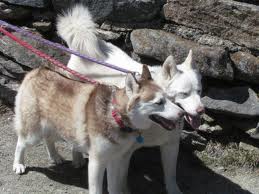
Mistress trades Melissa - Posts: 3464
- Joined: Mon Jun 19, 2006 9:28 pm
No thoughts? I'd like to here some criticisms, I am new and I want to make sure I'm doing as good models as possible.
-

Austin Suggs - Posts: 3358
- Joined: Sun Oct 07, 2007 5:35 pm
No thoughts? I'd like to here some criticisms, I am new and I want to make sure I'm doing as good models as possible.
The sides of the building are just one single flat surface. If you apply a texture to it you will need to repeat it often, it will look boring and the player will clearly see the tiling. Try divide the building into more parts, by using wooden beams for example. Then you can add slightly different textures to the divided surfaces (or at least use the UV map to make them look different if the texture is large enough), which will give the building a much better look. You could also bend/scale the wooden beams (like you've planned for the wooden railing) to give it a more natural look and make sure not everything looks the same.
One other very important thing are vertex colors. Vertex colors give your model depth, they're basically a replacement for ambient occlusion. But they can also be used for other effects, like slightly altering the color/brightness of surfaces/parts of the model. Often it's necessary to add faces to the model that you can't see in game to make the vertex colors work. Most Bethesda models have vertex colors, just look at some Oblivion models in Nifskope for example. Uncheck vertex colors to see the difference it makes.
-

Tina Tupou - Posts: 3487
- Joined: Fri Mar 09, 2007 4:37 pm
Looking good so far dragon. As for details, are you planning on having a fireplace inside the building etc, If so you could add a chimney to the roof etc.
And slightly going offtopic again but
Im not arguing etc, appreciate the help but.
The flip normals and and Recalculate outside/inside are in the same menu. Ive tried them all. While the Recalculate outside/inside does work better than just flip normals, it still gives the same problem, just fixes more than flip normals. Im not sure if its just the shape of the thing ive modeled thats causing the problems, not really sure how it detects whats outside/inside etc. Need to try a different model to see. Its not a major problem anyway, i can still fix it just using the commands on individual faces, just a bit longer
And slightly going offtopic again but

For some reason, I do tend to get ignored. 
Well, I see that you don't know the commands because you're mentioning FLIP. While I recommended FACE NORMALS INSIDE or OUTSIDE.
The difference is that FLIP will flip faces to their opposite side: for example if you have 10 faces facing right and one facing wrong, if you select all and Flip you'll have one face right and 10 wrong. While commands that I mentioned previously will do exactly what you want to (you described it).

Well, I see that you don't know the commands because you're mentioning FLIP. While I recommended FACE NORMALS INSIDE or OUTSIDE.
The difference is that FLIP will flip faces to their opposite side: for example if you have 10 faces facing right and one facing wrong, if you select all and Flip you'll have one face right and 10 wrong. While commands that I mentioned previously will do exactly what you want to (you described it).
Im not arguing etc, appreciate the help but.
The flip normals and and Recalculate outside/inside are in the same menu. Ive tried them all. While the Recalculate outside/inside does work better than just flip normals, it still gives the same problem, just fixes more than flip normals. Im not sure if its just the shape of the thing ive modeled thats causing the problems, not really sure how it detects whats outside/inside etc. Need to try a different model to see. Its not a major problem anyway, i can still fix it just using the commands on individual faces, just a bit longer

-

CArla HOlbert - Posts: 3342
- Joined: Wed Feb 21, 2007 11:35 pm
Im not arguing etc, appreciate the help but.
The flip normals and and Recalculate outside/inside are in the same menu. Ive tried them all. While the Recalculate outside/inside does work better than just flip normals, it still gives the same problem, just fixes more than flip normals. Im not sure if its just the shape of the thing ive modeled thats causing the problems, not really sure how it detects whats outside/inside etc. Need to try a different model to see. Its not a major problem anyway, i can still fix it just using the commands on individual faces, just a bit longer
The flip normals and and Recalculate outside/inside are in the same menu. Ive tried them all. While the Recalculate outside/inside does work better than just flip normals, it still gives the same problem, just fixes more than flip normals. Im not sure if its just the shape of the thing ive modeled thats causing the problems, not really sure how it detects whats outside/inside etc. Need to try a different model to see. Its not a major problem anyway, i can still fix it just using the commands on individual faces, just a bit longer

Then only one thing falls on my mind. Have you maybe used mirror? Mirror also flips normals so you have to flip them right after while they are still selected. In that case ctrl+(shift)+N doesn't help unless only targeted faces are selected.
Dragonbone - try to Set Smooth the model, otherwise I'll join other comments and say that it is a good work so far for. Maybe you could post pics that are not so dark and maybe in Edit mode so that wireframe is seen.
-
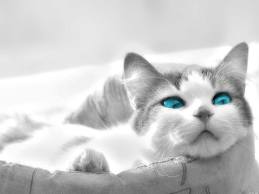
mike - Posts: 3432
- Joined: Fri Jul 27, 2007 6:51 pm
Then only one thing falls on my mind. Have you maybe used mirror? Mirror also flips normals so you have to flip them right after while they are still selected. In that case ctrl+(shift)+N doesn't help unless only targeted faces are selected.
hmm... thats possible. I cant remember whether i did as it doesnt have a modifier atm, but i think i might have already applied the modifier. Maybe thats the problem.
I'll try to remember to keep checking in future as i go to avoid having many wrong faces

Thanks for the help
-

helen buchan - Posts: 3464
- Joined: Wed Sep 13, 2006 7:17 am
Thanks for all the input people. I've done some more editing, added more detail. I kinda wanted these buildings to be pretty much all stone (apart from the railing) so I wasn't sure what to put in to split up the wall, but I eventually decided on some buttresses, which I made using an edited version of my pillar meshes and thus have the same basic shape. I also put in some windows. I'll upload a picture tomorrow morning. I'm not sure about the buttresses, they look a little odd (as in possibly not that fitting with the Nordic theme) but they might look better textured. It's hard trying to make something look Nordic when there's no stone Norse architecture to draw influence from (seems the pretty much exclusively used wood). By the way, I tried to texture my building following a tutorial from Mr Siika, but I'm having the same issue as TriggerHappy, recalculate normals doesn't seem to work right, none of the right faces are flipping and a lot aren't flipping at all when I use it. The tutorial is no help here, it seems to assume this will invariably work in one shot.
-
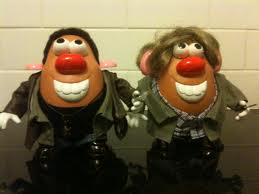
Devils Cheek - Posts: 3561
- Joined: Sun Aug 13, 2006 10:24 pm
Thanks for all the input people. I've done some more editing, added more detail. I kinda wanted these buildings to be pretty much all stone (apart from the railing) so I wasn't sure what to put in to split up the wall, but I eventually decided on some buttresses, which I made using an edited version of my pillar meshes and thus have the same basic shape. I also put in some windows. I'll upload a picture tomorrow morning. I'm not sure about the buttresses, they look a little odd (as in possibly not that fitting with the Nordic theme) but they might look better textured. It's hard trying to make something look Nordic when there's no stone Norse architecture to draw influence from (seems the pretty much exclusively used wood). By the way, I tried to texture my building following a tutorial from Mr Siika, but I'm having the same issue as TriggerHappy, recalculate normals doesn't seem to work right, none of the right faces are flipping and a lot aren't flipping at all when I use it. The tutorial is no help here, it seems to assume this will invariably work in one shot.
Just incase you dont know. (not seen the tutorial either so you might know this anyway)
If you set the view to textured mode, then go into edit mode on the object and select all, you can see which faces are facing the wrong way.
You can use the recalculate/flip on the individual faces and you will eventually end up with them all the right way. You can switch to face select mode also which helps.
Just takes a while depending how many are wrong way.
-

celebrity - Posts: 3522
- Joined: Mon Jul 02, 2007 12:53 pm
33 posts
• Page 1 of 2 • 1, 2
